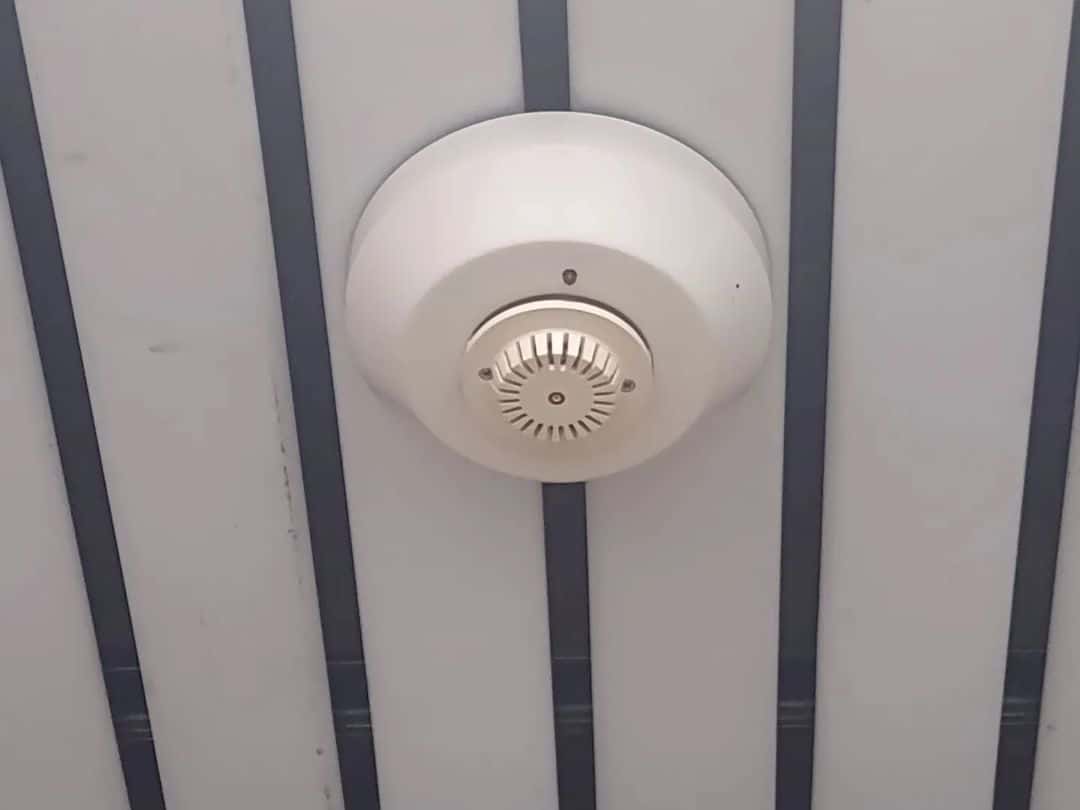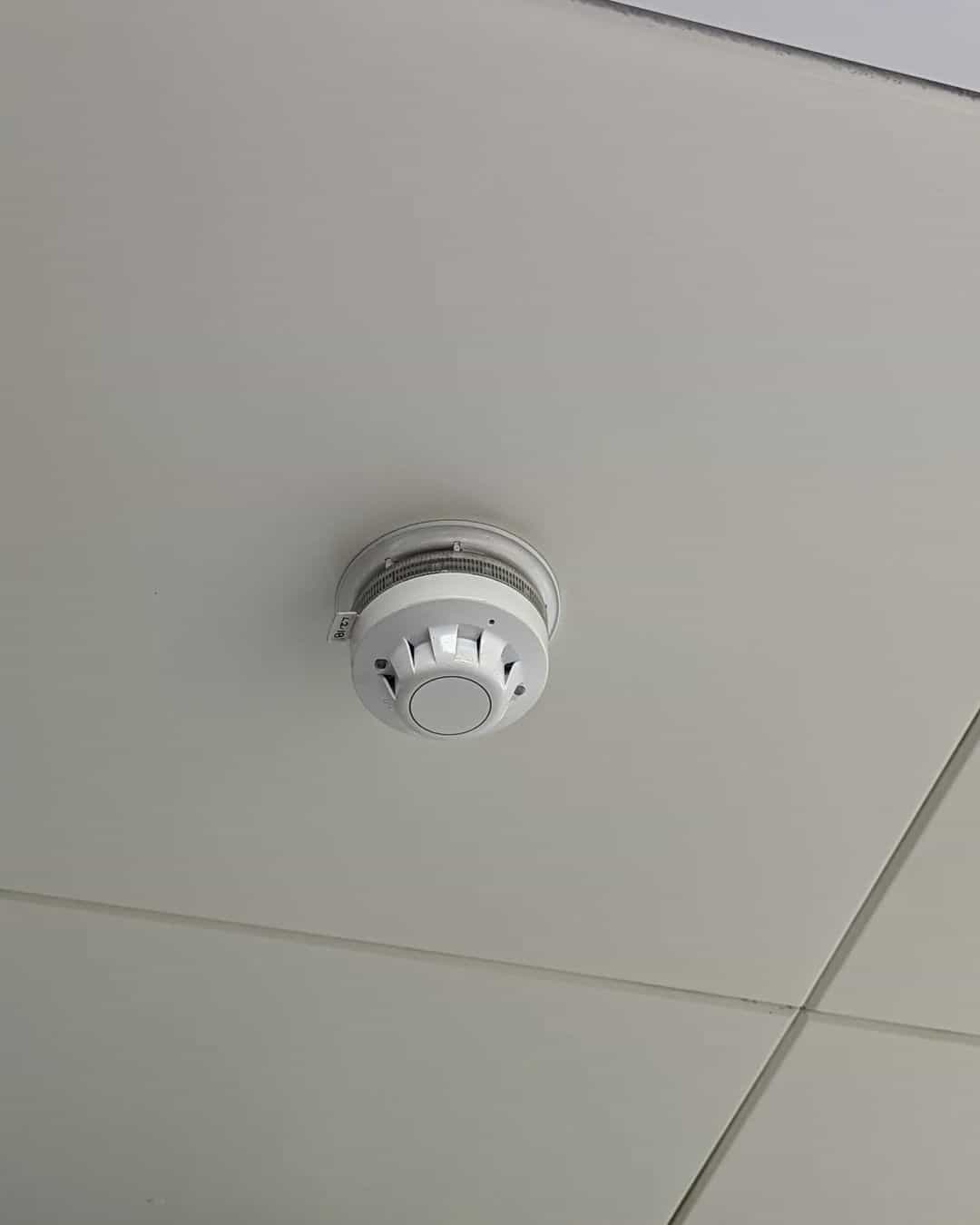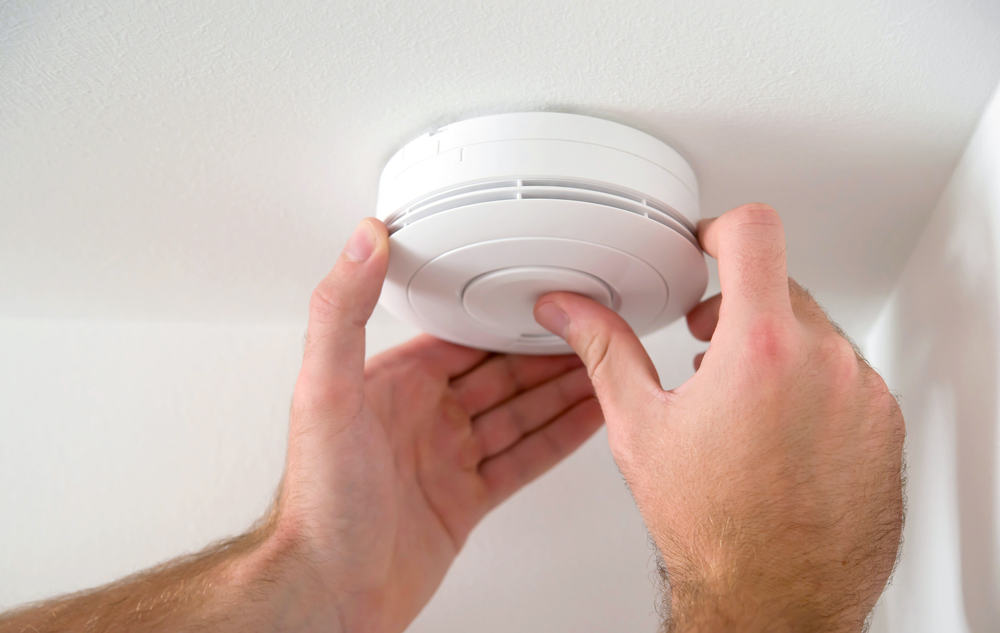A smoke detector is one of the most essential devices in any building, sending warning sounds in cases of fire hazards. However, one common problem people face with them is the consistent chirping or beeping sounds without smoke or fire. This usually means that its battery is weak and needs changing. But where the beeps persist upon replacing the battery, you should look further into resetting the smoke detector.
Resetting the smoke detector can be done in straightforward steps, which will be explained in this article.
Table of Contents
Troubleshooting smoke detector beeping after battery replacement
A beeping smoke alarm usually has something to do with a low battery or rewiring. So, if your smoke alarm constantly beeps, you should try troubleshooting it to ensure it’s not a minor issue. Here are some helpful tips:
1. Ensure the batteries are installed properly
The first step to finding the problem with your smoke detector is ensuring it’s not a you-problem. Here’s what you should do:
- Ensure you’re using the appropriate battery type
- Confirm that the battery is sitting correctly in its place
- Check to see if the battery compartment door, if it does have one, is completely shut.
2. Examine the environment close to the smoke alarm
Another possible cause of the beep is that your smoke alarm detects smoke or something closely related. Again, it would help if you fixed this to prevent false alarm situations.
- The alarm may also be triggered by humidity, condensation, and steam
- Check for any source of airflow near the smoke alarm, like electric fans, cooling units, or opened vents.
- A drop in the room temperature may affect the battery and cause it to chirp. A smoke detector works best at 40 to 95 degrees Fahrenheit

3. Clear the residual charge
Smoke detectors have processors that may keep error codes and residual charge even after installing new batteries. So, you must remove the residual charge from the old battery to stop the beeping. This mainly occurs with electrical-powered smoke detectors with battery backup. In this case, clearing the residual charge can be done in the following steps:
- Unmount the smoke detector
- Remove the smoke alarm’s battery and long-press the test button for 15 seconds.
- Put in a new battery and close the battery compartment
- Clean out the unit with a cloth and vacuum the outer part of the smoke alarm to get rid of dirt and debris
- Long press the test button again until it lets off a loud beep. This indicates that the smoke detector is working perfectly again.
Resetting the smoke detector
Resetting a smoke detector is relatively easy regardless of whether you’ve done it before. However, the resetting steps differ for electric smoke and battery-powered detectors.
1. Resetting electrical smoke detectors with battery backup
- Turn off your home’s circuit breaker to shut off the electrical current going to the smoke detector
- Gently remove the smoke detector from the ceiling or wall by unscrewing w it off its mounting bracket with a screwdriver.
- Disconnect the alarm’s cable from the power source
- After removing the detector, you will notice the battery compartment. Open the drawer, take out the battery, and press the test button for about 15-30 seconds. An alarm will set off and then stop after a while. However, some smoke detectors’ reset processes may differ depending on their manufacturers. So you will need to refer to their manufacturer’s instructions.
- Replace the battery in the smoke detector, ensuring you match the negative and positive sensors, and close the battery drawer properly.
- Install the smoke detector on its mounting bracket, plug it back into the power source and turn on the breaker. When this is done, the smoke detector will beep once to recognize the power restoration.

2. Resetting battery-operated smoke detectors
- After mounting the smoke detector, remove the battery’s cover and the battery.
- Press and hold the test button for about 15 seconds. Then an alarm will beep for a short time and go off.
- Put the battery properly back in its place and close the battery drawer. The smoke detector will beep once to indicate the battery is connected and power is restored.
- Return the smoke detector properly to its position.
Note: If the smoke detector shows off a blinking red light, press the “test” or “silence” button. Also, you can press “*72” on your keypad in your alarm system to reset the smoke detector.
After this process, you have successfully reset the smoke detector, and you should no longer have any beeping problems.
Common reasons for smoke detector beeping
Although the most apparent reason is a low battery, there are several reasons your smoke detector keeps chirping after changing the battery. So a battery replacement might not be the answer. Here are a few common reasons for a beeping smoke detector:
- The smoke detector’s sensors may be blocked by dust and will, thus, trigger the alarm. You will need to clean the sensors to resolve the issue.
- The battery pull tab is still in the detector after AC has been supplied or changed batteries. The battery pull tab is located in the terminal and must be removed before batteries are installed. Otherwise, it will result in the detector chirping.
- Temperature fluctuations can also trigger alarm chirps, primarily where your alarm is close to a bathroom, cooling unit, or kitchen. Close proximity to these places will lead to an unstable temperature, which may negatively affect the battery life.
- Where the battery drawer is left open even slightly, the detector will sense it and beep. This is because the battery drawer protects the battery installed and must be closed appropriately every time.
- Batteries may leak due to age or other environmental factors. When this happens, the battery may leak chemicals which will corrode the smoke detector and cause it to beep frequently.
- Your new batteries may not be as fresh as you think. For example, when batteries are kept in cold areas, they lose their charge faster. So always have extra new batteries for this kind of situation.
- It may not be your smoke alarm chirping. There are other devices like security systems and carbon monoxide detectors that have a similar beep sound to that of the smoke detector.
- Someone may have tipped off the smoke alarm “silence” button. This will cause the alarm to beep for 15 minutes before going off and resetting.
- Your smoke detector lifespan might be over and needs to change. When your smoke detector is old and acting up, it is a sign that it needs to be replaced. Most alarms last up to 7-10 years and may not function properly after that. So, there’s no point in overthinking your battery or environmental conditions. You have to let it go and purchase a new one.

Tips for maintaining a smoke detector
If you desire your smoke detector lasts for a long time, you must perform your own responsibilities to it. Although smoke detectors do not attract much attention, there are certain things you must do to keep them properly working and preserve their lifespan. The following are a few tips on maintaining a smoke detector:
- Test your smoke detector regularly, at least once a month, to ensure they’re in the proper state. It will also help to ascertain your family’s safety from possible hazards.
- Replace the batteries in the smoke detector twice a year or more frequently if the batteries are showing signs of weakness. This will prevent sudden changes and situations in the smoke alarm’s operation.
- Most smoke detectors have different lifespans, so it’s essential to check the manufacture and expiry date and replace them according to the manufacturer’s guidelines.
- Periodically clean your alarm’s sensors to eliminate dust or dirt that could limit its work.
- Place the smoke detector in a room with a stable temperature
- Ensure that you always use suitable batteries for the smoke detector.
- Don’t use weak batteries for the smoke detector. When installing a new battery, the smoke detector lets out a brief beep to indicate this. But where this beep is prolonged, it may mean that battery has insufficient power, and you’ll need to replace it.
- Where the problem is weak electrical power or low voltage, the smoke alarm lets out a soft beeping sound. To resolve this in hardwired smoke alarms, disconnect the power until the beeping stops.
Conclusion
A battery replacement is only sometimes the solution to your smoke alarm chirping. These chirps may mean several other things you need to note. So, to avoid getting false alarms from your smoke detector, you will need to examine the environmental factors and the internal components of your smoke detector.
Thankfully, most problems with smoke alarms are easy fixes, including resetting them. It is also important to take maintenance steps to keep the smoke alarm in good condition. However, if you are facing problems with installation or any other aspect of your smoke alarm, it’s best to contact a professional electrician.
